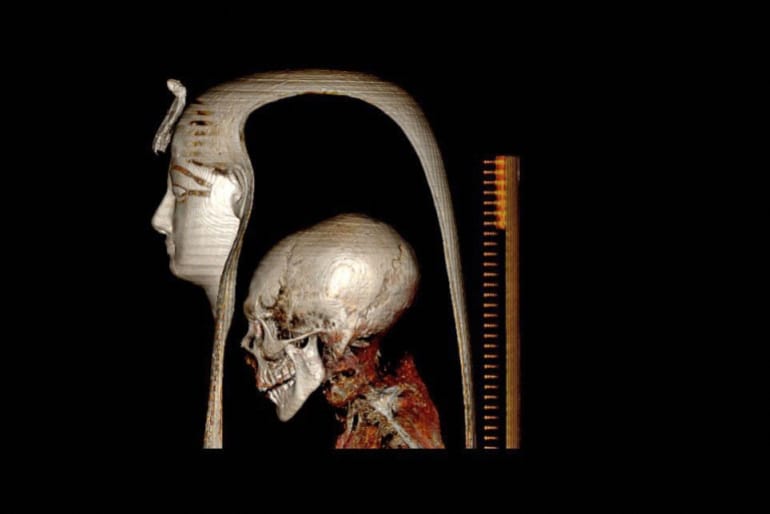
The mummy of Amenhotep I, an Egyptian pharaoh was first discovered in 1881. And, for the first time, the 3,500-year-old mummy was unwrapped digitally.
Digital unwrapping of a mummy
Egyptian lives of the past and their mummified remains have always been fascinating to modern humans. “By digitally unwrapping … the mummy and ‘peeling off’ its virtual layers — the facemask, the bandages, and the mummy itself — we could study this well-preserved pharaoh in unprecedented detail,” said Dr. Sahar Salee. Dr. Saleem is a professor of radiology at Cairo University’s Faculty of Medicine. She is also the radiologist for the Egyptian Mummy Project. “Nowadays we do not physically unwrap mummies anymore. We preserve our heritage and study them with non-invasive techniques,” she added.
The researchers employed a three-dimensional computerized tomography or, CT scan for unwrapping and studying the mummy of the Egyptian Pharoah. The study was published in Frontiers in Medicine on Tuesday. Hence, the new development will provide fascinating insights into the life of the Egyptian pharaoh. “For the first time we can know information about the mummy without disturbing the mummy,” stated Zahi Hawass. Hawass, a prominent Egyptologist is the co-author of the study.
What do we know about the life of the Egyptian pharaoh?
Amenhotep I ruled the Egyptian civilization for around 21 years between 1525-1504 BC. While his original tomb was never located, his mummy was found in Luxor, where it was reburied. The new study also revealed that Amenhotep I was about 35 years old at the time of his death. The king had curly hair, a narrow nose and, a narrow chin. He was 169 centimeters tall according to Dr. Saleem and her colleague’s findings. The wrappings also revealed around 30 amulets underneath. Additionally, they found a unique golden girdle. However, the cause of his death still remains a mystery.
With the help of the CT scans, they discovered that, unlike most mummies, Amenhotep I’s brain was not removed during his mummification. “We are planning now to do the same type of a study to all the royal mummies,” stated Hawass. After all, new technology is a gateway to discovering heritage and history without harming it.
